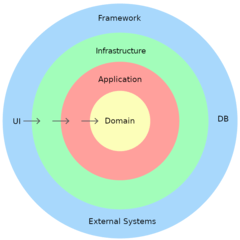Popular authentication methods for Applications
Robust authentication methods are essential for securing access to sensitive information and resources within applications. Authentication serves as the initial barrier, ensuring only authorized users gain entry to protected areas. From traditional password-based authentication to advanced token-based systems and OAuth protocols, developers have a range of options to ensure the security of their applications. This article explores these authentication methods, highlighting their strengths, weaknesses, and best practices to assist developers in implementing secure and user-friendly authentication systems.
Password-based authentication
Password-based authentication remains one of the most prevalent methods for user authentication in applications. Users create a password - a combination of characters - that grants them access to their accounts. This method is simple and familiar, requiring users only to remember their chosen passwords.
However, its simplicity comes with risks. Weak passwords, such as "123456" or "password," are easily guessed or cracked by attackers using automated tools. To mitigate this risk, developers often enforce password complexity requirements. For example, requiring passwords to contain a mix of uppercase and lowercase letters, numbers, and special characters makes them more resilient to brute force attacks.
Additionally, implementing measures like multi-factor authentication (MFA) adds an extra layer of security. MFA requires users to provide two or more verification factors, such as a password and a one-time code sent to their mobile device, further bolstering the authentication process.
In password-based authentication, user credentials are typically saved and encoded in a secure manner to prevent unauthorized access. When a user registers or updates their password, the password is hashed - a cryptographic process that converts the password into a fixed-length string of characters. The hashed password is then stored in the database. When the user attempts to log in, the entered password is hashed using the same algorithm, and the resulting hash is compared to the stored hash in the database. If they match, the user is granted access.
Upon successful login, a session identifier is created and stored either on the server or in a cookie on the client-side. This identifier is then used to associate subsequent requests with the authenticated user session. Sessions typically expire after a certain period of inactivity or when the user logs out, providing an additional layer of security.
Basic authentication
Basic Authentication is a simple yet widely used method for authenticating users in web applications. It involves sending the user's credentials (username and password) as part of the HTTP request headers. The credentials are encoded with Base64 encoding, which provides a simple form of encryption but does not provide actual security as the encoded credentials can be easily decoded.
When a user attempts to access a protected resource on the server, the client (usually a web browser) prompts the user to enter their username and password. The client then encodes the username and password using Base64 encoding and includes them in the HTTP request headers. The server receives the request, decodes the credentials, and verifies them against the stored user credentials. If the credentials are valid, the server grants access to the requested resource; otherwise, it returns a 401 Unauthorized response.
While Basic Authentication is simple to implement, it has some significant limitations. One major drawback is that it sends the user's credentials in plaintext with each request, making it susceptible to interception attacks. Additionally, since Base64 encoding is not encryption, the credentials can be easily decoded by anyone with access to the encoded string. Despite its limitations, Basic Authentication is still used in some cases, particularly for internal or trusted systems where security concerns are minimal. However, for applications that require stronger security measures, more advanced authentication methods such as token-based authentication or OAuth should be considered.
API Keys authentication
API keys are a simple form of authentication used by applications to identify and authorize access to their APIs. These keys are typically long alphanumeric strings generated by the server and included in API requests. For example, when integrating with a payment gateway API, developers generate an API key that clients include in their requests to authenticate and authorize access to the payment services. API keys provide a straightforward way to control access to APIs and track usage.
Token-based authentication
Token-based authentication is a modern approach widely used in web applications. When a user logs in successfully, the server generates a token - a unique string of characters - that the client application presents for subsequent authentication requests. An example of token-based authentication is when a user logs into a social media platform. After entering their credentials, the server issues a token that the user's browser stores. This token is then sent with each subsequent request to authenticate the user's access to various features and resources, such as posting updates or viewing their timeline.
One of the key advantages of token-based authentication is its scalability and statelessness. Since tokens contain all necessary authentication information, servers do not need to store session data, making it easier to scale applications horizontally.
JSON Web Tokens structure
JSON Web Tokens (JWT) are a popular choice for token-based authentication due to their simplicity and flexibility. A JWT token consists of three parts: a header, a payload, and a signature. The header contains metadata about the token, such as the type and signing algorithm.
{
"alg": "HS256",
"typ": "JWT"
}The payload, also known as the claims, contains information about the user and additional data. Claims are statements about the user and can include things like the user's ID, roles, and expiration time. For example:
{
"sub": "1234567890",
"name": "John Doe",
"admin": true,
"exp": 1617379320
}In this payload, "sub" represents the subject of the token (i.e., the user ID), "name" is the user's name, "admin" indicates whether the user is an administrator, and "exp" is the expiration time of the token (in Unix time). It's important to note that sensitive information should not be included in the token payload. Since JWT tokens are encoded, not encrypted, anyone with access to the token can decode it and view its contents.
The signature is generated using a secret key and is used to verify the authenticity of the token. This ensures that the token has not been tampered with during transmission. For example:
HMACSHA256(
base64UrlEncode(header) + "." +
base64UrlEncode(payload),
secret
)
The header and payload are concatenated, and the result is hashed using HMAC SHA-256 with the secret key. The resulting signature is included in the token, allowing the recipient to verify its authenticity.
OAuth authorization protocol
OAuth is an open-standard authorization protocol used to grant third-party applications limited access to a user's resources without sharing their credentials. For example, when a user logs into a website using their Google or Facebook account, OAuth allows the website to access certain user information from the service provider (e.g., name, email) without exposing the user's password. OAuth tokens are used to authenticate and authorize requests between the client application and the server.
Conclusion
Authentication methods are vital for safeguarding user accounts and sensitive data within applications. Developers have a range of tools, from traditional password-based authentication to advanced token-based systems and OAuth protocols, to ensure security. Understanding the strengths, weaknesses, and best practices of each method enables the implementation of robust and user-friendly authentication systems. With the ongoing threat of cyber attacks, prioritizing secure authentication practices is imperative for protecting applications and user data in today's digital environment.



0 Comments